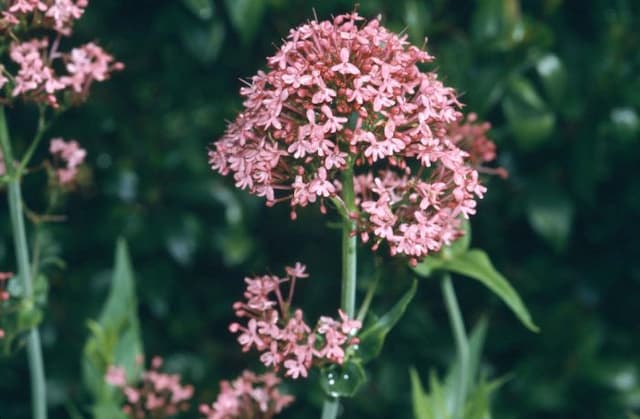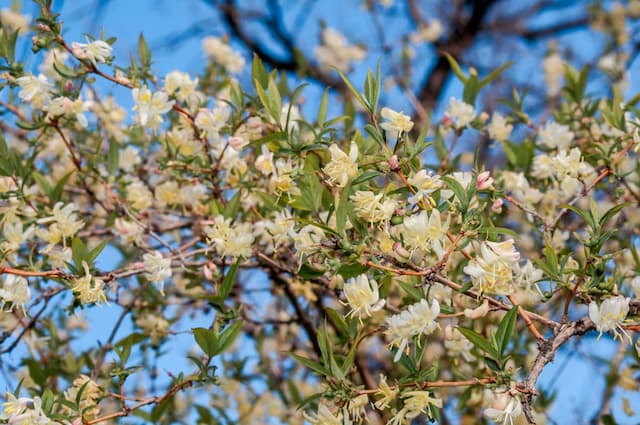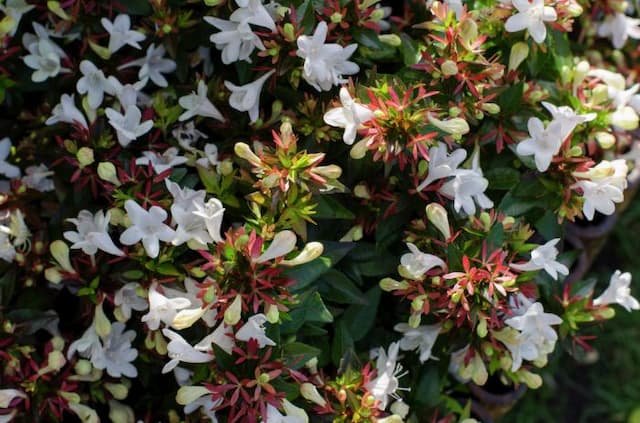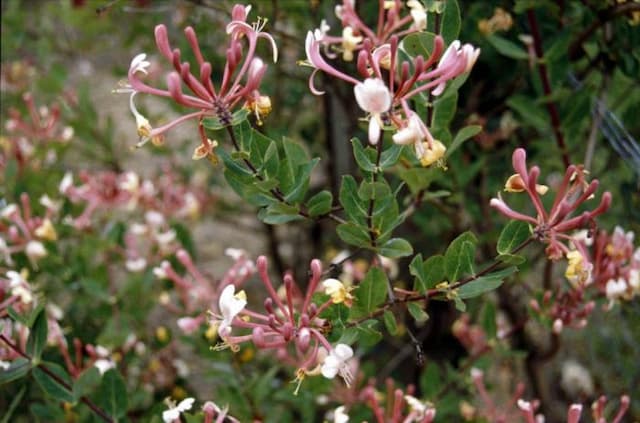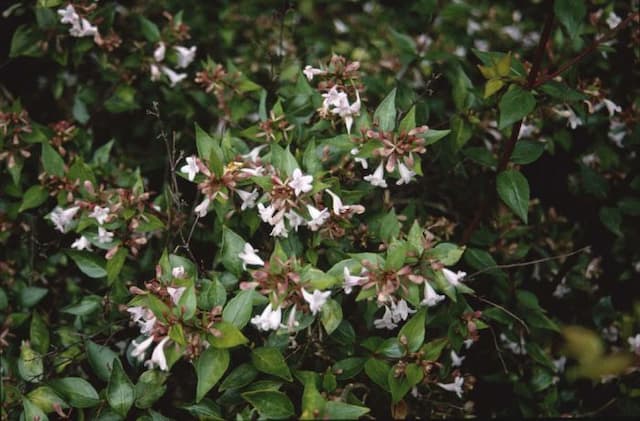Sweet scabious 'Ace of Spades' Scabiosa atropurpurea 'Ace of Spades'

ABOUT
'Ace of Spades' is an annual or short-lived perennial with erect, branching stems to 60cm in height and pincushion flowerheads to 5cm across, flowering from midsummer into the autumn. The very dark purple flowers appear almost black, have a delicate scent, and may be followed by bristly seedheads
About this plant
 Names
NamesFamily
Caprifoliaceae
Synonyms
Pincushion Flower, Sweet Scabious, Mourning Bride
Common names
Scabiosa atropurpurea.
 Characteristics
CharacteristicsLife cycle
Biennials
Foliage type
Deciduous
Color of leaves
Green
Flower color
Dark purple
Height
2-3 feet (60-90 cm)
Spread
1-1.5 feet (30-45 cm)
Plant type
Herb
Hardiness zones
9
Native area
Mediterranean
Benefits
 General Benefits
General Benefits- Attracts Pollinators: Scabiosa serves as a nectar-rich food source for bees, butterflies, and other beneficial insects.
- Aesthetic Appeal: With its deep, maroon flowers, 'Ace of Spades' adds striking color and visual interest to gardens.
- Drought Tolerance: Once established, it can withstand periods of drought, making it suitable for xeriscaping.
- Cut Flower: The blooms are long-lasting when cut and are ideal for bouquets and floral arrangements.
- Wildlife Habitat: Provides shelter and food for small wildlife, supporting biodiversity in the garden.
- Easy to Grow: It is generally low-maintenance, adapting well to a variety of soil types and garden conditions.
- Long Blooming: Offers a lengthy blooming season from early summer to fall, providing extended garden interest.
- Compact Size: Its relatively small and neat growth habit makes it suitable for borders, pots, or small gardens.
- Deer Resistance: Less attractive to deer, which can be beneficial in areas where deer browsing is a problem.
- Versatility: Can be used in a variety of landscaping designs, from cottage gardens to modern urban settings.
 Medical Properties
Medical PropertiesThis plant is not used for medical purposes.
 Air-purifying Qualities
Air-purifying QualitiesThis plant is not specifically known for air purifying qualities.
 Other Uses
Other Uses- Natural Dye: Scabiosa flowers can be used to create a natural dye for fabrics, providing a range of hues from soft greys to deep purples depending on the mordant used.
- Photography: The striking dark blossoms of the Scabiosa make it an excellent subject for botanical photography, enhancing portfolios with its unique aesthetics.
- Artistic Inspiration: The intricate petals and moody tones of the pincushion flower can inspire artists, leading to its inclusion in paintings, drawings, and textile designs.
- Eco-friendly Confetti: Dried petals of the Scabiosa can serve as a biodegradable confetti option for events such as weddings, diminishing the environmental impact.
- Bookmark Decoration: Pressed Scabiosa flowers can be laminated or inserted into clear bookmarks, creating a beautiful and natural look for book lovers.
- Floral Baths: Adding Scabiosa flowers to bathwater can create an immersive, spa-like experience with the added benefit of skin-softening properties from the plant compounds.
- Scented Sachets: Dried Scabiosa flowers can be used in sachets to naturally scent drawers and wardrobes, offering a subtle and pleasant fragrance.
- Cake Decoration: Edible varieties of Pincushion flowers can adorn cakes and desserts, providing an elegant and organic touch to culinary presentations.
- Scrapbooking: The Scabiosa's unique flower shape and color make it a popular choice for adornments in scrapbooks and other paper crafts.
- Insectary Plant: Scabiosa can be planted in gardens to attract and support beneficial insects, such as bees and butterflies, which are important for pollination.
Interesting Facts
 Feng Shui
Feng ShuiThe Pincushion Flower is not used in Feng Shui practice.
 Zodiac Sign Compitability
Zodiac Sign CompitabilityThe Pincushion Flower is not used in astrology practice.
 Plant Symbolism
Plant Symbolism- Sadness or grief: Scabiosa atropurpurea, commonly known as "Pincushion Flower," is often associated with feelings of sadness or mourning, which is reflected in its other nickname "Mourning Bride."
- Love and Pure Thoughts: Despite its association with sorrow, Pincushion Flowers can also represent love and purity, symbolizing the tender thoughts one holds for another.
- Admiration: Giving someone a Pincushion Flower can express admiration, as its unique and intricate blooms are seen as a testament to nature's beauty worth admiring.
 Water
WaterPincushion flowers require regular watering to maintain moist but well-drained soil. They should be watered deeply once a week, offering about 1 inch of water each time which translates to about 0.6 gallons for an average-sized plant. It's important to avoid overhead watering to prevent fungal diseases, so water at the base of the plant. During hot and dry periods, watering frequency may need to increase to twice a week. Always check the soil moisture level before watering to avoid overwatering, as Pincushion flowers are sensitive to waterlogged conditions.
 Light
LightPincushion flowers thrive in full sun to light shade. The ideal spot for this plant is a location where it can receive at least 6 to 8 hours of direct sunlight per day. While it can tolerate some light shade, too much shade can lead to weak stems and fewer blooms. When grown in partial shade, ensure it still gets ample morning light or filtered afternoon sun for optimal growth.
 Temperature
TemperaturePincushion flowers prefer moderate temperatures and can generally tolerate a range between 40°F to 85°F. They are hardy in USDA zones 3 to 7, meaning they can survive winters where temperatures do not typically drop below -40°F. However, the ideal growing temperature for Pincushion flowers is between 60°F and 75°F where they produce the best blooms and foliage.
 Pruning
PruningPruning Pincushion flowers encourages reblooming and maintains plant health. Deadhead spent flowers regularly to promote continuous bloom throughout the season. In early spring or after the last frost, cut back any dead or damaged stems to maintain a tidy appearance and stimulate new growth. The best time to perform more substantial pruning is in early spring or after the plant has finished flowering in the fall.
 Cleaning
CleaningAs needed
 Soil
SoilThe Pincushion Flower prefers a well-draining soil mix rich in organic matter; a blend of one part garden soil, one part compost, and one part perlite or coarse sand is ideal. The soil pH should be slightly alkaline, around 7.0 to 7.5, for optimal growth.
 Repotting
RepottingThe Pincushion Flower does not need frequent repotting; repot every 2-3 years or when rootbound. Spring is the best time for repotting.
 Humidity & Misting
Humidity & MistingPincushion Flower thrives in moderate humidity levels but does not require high humidity; average room humidity is generally suitable for this plant.
 Suitable locations
Suitable locationsIndoor
Pincushion Flower needs bright light and well-draining soil indoors.
Outdoor
Plant in full sun to part shade and well-draining soil outdoors.
Hardiness zone
4-10 USDA
 Life cycle
Life cycleScabiosa atropurpurea 'Ace of Spades', commonly known as the Pincushion Flower, begins its life cycle when seeds are sown in spring after the last frost or in autumn in warmer climates. The seeds germinate, developing into seedlings with a small rosette of leaves at the soil surface. As the plant matures, it forms a larger clump with deeply lobed leaves and erect stems. From early summer to fall, the plant produces distinctive pincushion-like flowers that are highly attractive to pollinators such as bees and butterflies. After flowering, seed heads form, which can be collected for propagation or left to self-seed, thereby completing the reproductive cycle. Over the winter, plants may die back, especially in colder climates, but will regrow from rootstock or self-sown seeds the following spring.
 Propogation
PropogationPropogation time
Spring-summer
Scabiosa atropurpurea 'Ace of Spades', commonly known as the pincushion flower, is most commonly propagated through seeds. The best time to sow seeds is in late winter to early spring, just before the last frost date, to give the plants a head start, or they can be sown directly into the ground after the threat of frost has passed. Seeds should be only lightly covered with soil as they require light for germination, usually taking 2 to 3 weeks at 70°F (around 21°C). Ensuring that the soil is kept moist but not waterlogged is key to successful seed germination. Once seedlings have emerged and are large enough to handle, they should be thinned out or transplanted to allow adequate space for growth.
